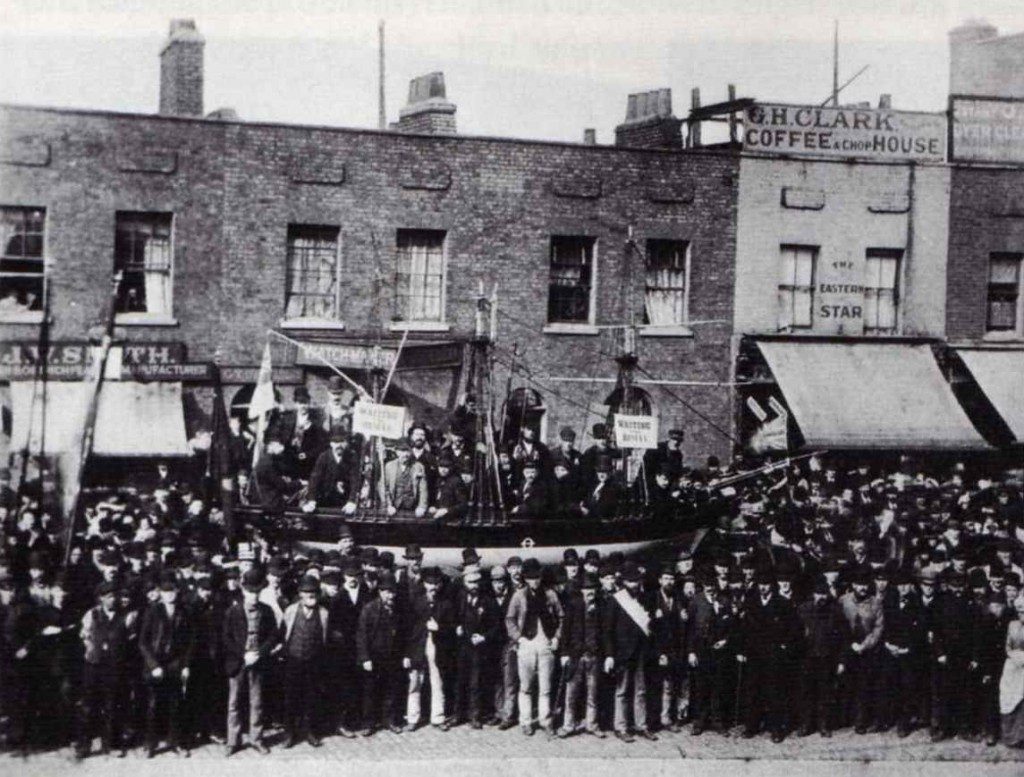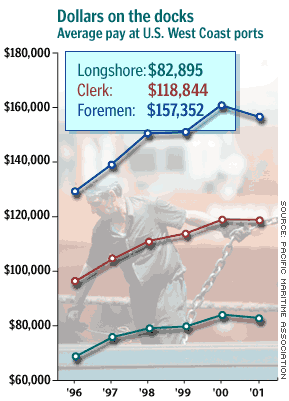Major Cocaine Bust: UK Border Force Seizes Record Shipment at London Gateway
In one of the UK’s largest drug seizures of the past decade, UK Border Force officers have seized cocaine with an estimated street value of £96 million (USD 130 million)...

– By Rojda Akdag, Managing Director, MTS Logistics
Labor stoppage, which is also known as a strike, is the problem aroused by the tension between a labor force and management. Tension usually starts with the conflicting view points of each party, labor wanting the maximum for the service that they provide while management is willing to pay the minimum for the same service. In general strikes are quite rare whereas 98% of the union contracts in USA are settled without a strike every year, however when a strike does occur the affects are quite damaging.
The origins of dock strikes in the US (especially West Coast) go back to Longshoremen (also known as dockworkers) unions. They were originally unorganized labor that were selected by a hiring party and with the affects of the Communist party in the 1920’s and other unions they became more demanding, and started the first strike on 1934, which is called the West Coast Longshoremen’s strike that lasted 83 days.
 It started in San Pedro, LA then affected port operations in Oakland, Portland & Seattle as well. Two people were killed in the demonstrations (Bloody Thursday) and all other unions in San Francisco decided to go on strike for four days due to unfortunate events. Arguably, the biggest dock strike that hit the economy bad was in 2002, also called the West Coast Dock Strike of 2002. When longshoremen decided to go on strike the estimated effect to US economy was $1 Billion per day!
It started in San Pedro, LA then affected port operations in Oakland, Portland & Seattle as well. Two people were killed in the demonstrations (Bloody Thursday) and all other unions in San Francisco decided to go on strike for four days due to unfortunate events. Arguably, the biggest dock strike that hit the economy bad was in 2002, also called the West Coast Dock Strike of 2002. When longshoremen decided to go on strike the estimated effect to US economy was $1 Billion per day!
With the new advances in technology and common use of new supply chain practices (such as Just In Time), any interruptions in the supply chain has more damaging affects than ever before. Many companies are now utilizing systems where when a product is sold at end point it triggers the factory in Asia to produce the new product thus ending reliance on holding cost of inventory. Containers are now moving from ships to distribution centers where it’s immediately broken down, repacked and sent to its final destination, and this new revolution in low inventory and successful utilization of supply chain logistics became the formula of productivity in USA. However this also came with a huge risk, risk of relying on external factors, like a labor strike that can damage the “perfect” system. Another problem that increases the huge risk of a strike is the disproportionate growth of West Coast trade. In the 1980’s, California accounted for only 15% of waterborne trade and in the 2000’s West Coast ports handled 42% of US waterborne trade, which more than doubled for the last 20 years or so. The biggest underlying threat that triggers the strikes especially in West coast ports is the advances in technology.
 Management at ports would like to bring barcode scanners, fast passes for toll booths and cargo tracking in the terminals so that they can make the system more efficient and cost saving however this does not goes well for Unions who employ 10,500 members that make from $80,000 to $158,000 per member.
Management at ports would like to bring barcode scanners, fast passes for toll booths and cargo tracking in the terminals so that they can make the system more efficient and cost saving however this does not goes well for Unions who employ 10,500 members that make from $80,000 to $158,000 per member.
Currently, there is a possibility of a threat of strike in East coast ports as well, and this threat is also used by steamship lines now to increase the rates as expectations of a possible lockout, so it seems a port strike now can not only disrupt the supply chain operation of importers but also affect the freight rates thus increasing the costs further.
![]() Rojda Akdag is the Managing Director of MTS Logistics. Rojda holds a BA from Koc University in Istanbul, and an MBA from Baruch College, New York.
Rojda Akdag is the Managing Director of MTS Logistics. Rojda holds a BA from Koc University in Istanbul, and an MBA from Baruch College, New York.

Sign up for gCaptain’s newsletter and never miss an update

Subscribe to gCaptain Daily and stay informed with the latest global maritime and offshore news


Stay informed with the latest maritime and offshore news, delivered daily straight to your inbox
Essential news coupled with the finest maritime content sourced from across the globe.
Sign Up